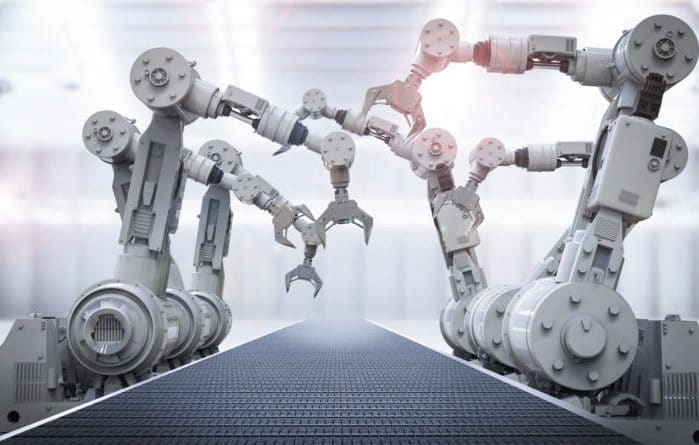Robots Don’t Take Away Jobs.
By Jeff Burnstein
President of the Association for Advancing Automation
Robots don’t take away jobs.
When companies lose to their competition, that’s when workers lose jobs.
There seems to be this idea: If the robots hadn’t shown up, the jobs would have stayed. But nothing could be further from reality.
Here’s the truth: We aren’t using enough robots.
The New York Time recently published an article that blames robots and artificial intelligence for the displacement of large chunks of Midwestern workers – and claims this led to today’s current political divisions.
This is a gross misunderstanding of the role automation plays in the American economy.
Over the last 25 years, many American manufacturers found themselves unable to compete with the lower costs and higher productivity of foreign manufacturers. They closed their doors or moved their operations. Those jobs left for another country. They weren’t taken away by machines.
In actuality, robots and automation have saved and created jobs – and will continue to do so.
Businesses that used automation to lower costs and increase productivity were able to compete with foreign suppliers and keep their doors open. Workers stayed on the job at those facilities, and their communities didn’t suffer the traumatic loss of another local employer.
Companies that embraced automation had the opportunity to grow and ultimately make more hires. Ask Marlin Steel in Baltimore or Vickers Engineering in New Troy, Mich., how their businesses were transformed – while providing safer, better, higher-paying jobs.
The real crisis – and opportunity
The truth is American industry is indeed facing a worker crisis – a crisis on two fronts.
First, there simply aren’t enough workers.
In the next 10 years, according to a recent Deloitte Consulting report, more than 2.4 million manufacturing jobs will go unfilled, because there aren’t enough people with the necessary skills. Long-haul trucking is currently experiencing the worst worker shortage it has ever had. In the growing warehouse market, with its aging workforce, there is an “unprecedented labor shortage,” according to one report. In California’s agriculture sector, there are four jobs open for every applicant, and the implication of not finding workers is severe.
Companies have no choice but to turn to robotics and automation to solve these problems – or they will go out of business.
And the second crisis: We lack the engineers, the technicians, AI specialists and workers with trade skills to help companies deploy automation solutions.
In the automation age, the range of opportunities is huge — and promising. Entry-level, automation-age manufacturing jobs can start at $20 per hour with just a high school diploma and a few months of training and professional certification. Highly technical positions can pay far more.
Rather than bashing robots, politicians and pundits could better spend their time by advocating for STEM-based education initiatives, while also developing public-private partnerships around worker retraining, apprenticeships and manufacturing certification programs.
Fifteen years ago, no one was an iPhone app developer or a search engine optimization specialist. As in previous industrial revolutions, we know new jobs will rise from innovation in automation.
We need to prepare for change and embrace it. Not stand it in its way – because our global competitors are not standing still.
The robotics race
Under its “Made in China 2025” initiative, the Chinese will invest $300 billion in their manufacturing and automation technologies. China wants to dominate the fields of robotics, artificial intelligence, 5G and quantum computing.
The rest of the world is also spending big. Under its Industry 4.0 initiative, Germany will invest more than 200 million euros in research and development funding for advanced manufacturing. Japan and South Korea are both investing heavily in industrial R&D as automation becomes even more essential to improving their competitiveness. The United Kingdom is stepping up its R&D efforts – including targeting funds at electric vehicle batteries and robotics – to help stimulate its economy.
The United States is just 16th in the world in robot adoption rate – a metric that track how fast a company is expected to automate based on economic factors. We are behind China, Japan and Mexico – and even Italy and Sweden.
The slow rate of automation adoption will hamper the ability of the United States to compete.
It won’t be robots that take jobs away.
But it may very well be the lack of robots that costs the American worker.
Jeff Burnstein is the President of the Association for Advancing Automation (A3), an umbrella trade group representing more than 1,200 global companies focused on robotics, machine vision, motors, motion control and advanced manufacturing technologies. For the latest details about A3 activities, visit www.a3automate.org

